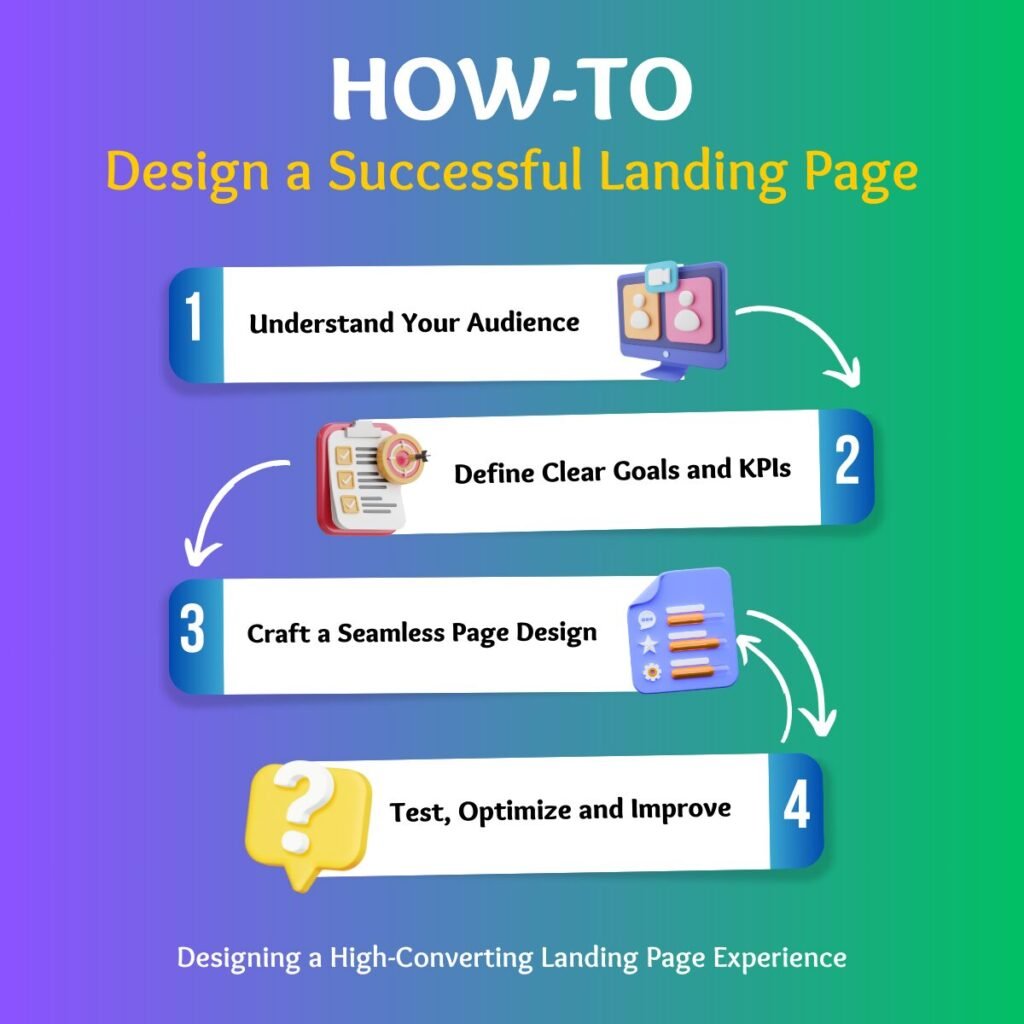
A landing page is more than just a web page. It is a powerful tool for turning visitors into leads or customers. A well-optimized landing page can boost your marketing success, but designing one that converts requires planning, a deep understanding of your audience, and continuous improvements.
In this blog, we will walk through the essential steps to create a high-converting landing page, from defining your audience to optimizing your design for better results.

1. Know Your Target Audience
The first step in designing an effective landing page is understanding who your audience is and what they need. If your page does not address their pain points or interests, it will fail to convert visitors.
How to Identify Your Target Audience
- Use tools like Google Analytics or customer surveys to gather data on your visitors.
- Identify the challenges and goals of your audience. What problem are they trying to solve?
- Analyze competitor landing pages to see what messaging and designs work for a similar audience.
Knowing your audience helps you create a message that speaks directly to them. Instead of generic headlines, you can use words and visuals that connect and encourage action.
2. Determine Your Goals and KPIs
Before designing your landing page, define your main goal.
- Are you trying to collect email sign-ups?
- Are you promoting a free trial?
- Are you driving product purchases?
Once you define your primary goal, set key performance indicators (KPIs) to measure success.
Key Landing Page Metrics
- Conversion Rate: The percentage of visitors who complete the desired action.
- Bounce Rate: The percentage of visitors who leave without interacting.
- Time on Page: Measures how engaged visitors are.
- Click-Through Rate (CTR): The percentage of visitors who click your CTA.
Tracking these KPIs helps you monitor your page’s performance and make improvements.
3. Design the Page Experience
Once you know your audience and goals, it is time to design a landing page that captures attention and encourages action.
Essential Elements of a High-Converting Landing Page
- Headline: This is the first thing visitors see. It should be clear, engaging, and communicate your value.
- Strong Visuals: Use images or videos that support your message. People process visuals faster than text, so make them count.
- Persuasive Copy: Focus on benefits, not just features. Instead of saying, “Our tool has AI-powered analytics,” say, “Get AI-driven insights to improve performance.”
- Clear Call-to-Action (CTA): Tell visitors exactly what to do next. Use action-driven text like:
- “Get Your Free Trial”
- “Download the Guide”
- “Start Optimizing Now”
- Minimal Distractions: Keep the design simple. Avoid unnecessary links, too many buttons, or excessive text.
- Mobile Optimization: More than half of web traffic comes from mobile devices. Make sure your landing page is mobile-friendly.
4. Test and Optimize
Your first landing page will not be perfect. The best way to improve conversions is through testing and ongoing optimization.
How to Test Your Landing Page
- A/B Testing: Compare two versions of a page (such as different headlines or CTA placements) to see which one performs better.
- Heatmaps and User Tracking: Use tools like Hotjar or Crazy Egg to analyze where users click and where they drop off.
- User Feedback: Collect insights through surveys or live chat tools to understand visitor behavior.
Important Metrics to Track
- Conversion Rate: Are visitors taking action?
- CTA Clicks: Are people clicking your buttons?
- Form Abandonment Rate: Are users dropping off before completing a form?
Regular testing helps you identify what works and refine your landing page to improve results.
5. Tips for a Successful Landing Page
- Keep your copy concise and action-oriented.
- Use trust signals like customer testimonials, reviews, or case studies.
- Ensure fast loading times to reduce bounce rates.
- Test different elements and use real data to make improvements.
Conclusion
A high-converting landing page is not built overnight. It is a process of learning, testing, and improving. By following these steps—understanding your audience, setting clear goals, designing a simple and engaging page, and continuously testing—you can create a landing page that turns visitors into customers.
Start optimizing your landing pages today and see better conversions. The more you refine, the better your results will be!






